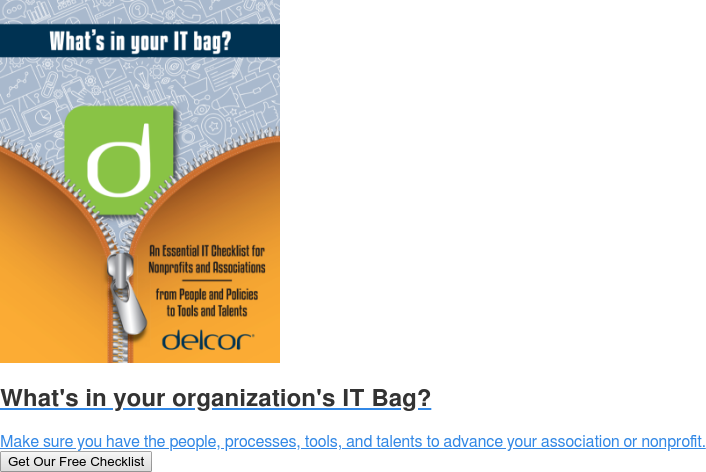Every organization wants to make better, data-informed decisions. But that’s easier said than done when you have too much data to wade through in too many different systems.
Data analytics has become an overwhelming task for many organizations. It’s hard to know where to begin to make sense of the data you have. Instead of making confident decisions, you end up floundering in analysis paralysis.
Or, you fall back on unreliable approaches to decision-making:
- Making assumptions based on what you think you know.
- Falling back on gut feelings influenced by cognitive biases.
- Relying on conventional wisdom.
- Listening to the loudest or most influential voices in the leadership echo chamber.
Collecting a ton of data doesn’t make you a data-informed organization. Instead, it’s how much value those data elements bring to you—and, ultimately, to your members and constituents—that makes you a data-informed organization.
Simply put, you need to be far more selective about the data you collect. This approach doesn’t just happen naturally. It takes the kind of planning and discipline made possible by an organizational strategy and a data governance team.

Your first step to better insight and decision-making: a data governance team
Every organization needs a cross-functional data governance team that includes, at the very least, representatives from your membership, marketing/communications, and IT departments. If you do fundraising, add someone from development too.
The data governance team develops and enforces policies to keep the organization’s data clean and updated.
Leadership support. The team must have the full support of leadership to ensure that sound data collection and management practices are followed throughout organization. No exceptions.
Data audit. The data governance team’s first assignment is an audit of existing data sources.
- What data you have now and where it resides.
- Who’s using that data and how.
- What shape the data is in— how complete, clean, and current.
- What data you will keep.
- What data you will purge and stop collecting.
Just like decluttering a house, you need to focus on the things (data) you need, and learn to let go of the things you don’t need. Just because you’ve collected a piece of information for years, doesn’t mean you should keep doing so—especially if you’ve never used it.
Compliance. The data governance team makes sure your organization stays in compliance with privacy laws, for example, the European Union’s GDPR, state regulations such as California’s CCPA, and the inevitable federal regulations.
Transparency. The team also spearheads a culture of data transparency. You must tell members and constituents why you want their data, what you will do with it, and how those actions will improve the member, attendee, or customer experience. When they understand your motives, they’re more likely to share information with you.
An organization-wide, holistic approach to data helps to get it out of silos. The data governance team ensures that staff has access to the data they need to understand members and customers, gain insight, and make good decisions.
Data Governance in Action
How do you use your data to make good decisions? Start with the end in mind. Be very clear about your business goal, the problem you want to solve, or the opportunity you want to explore.
Next, identify the key questions your association must answer to achieve that business goal.
Let’s say your goal is to increase member retention. You need to understand what behaviors might influence a member’s decision to renew—and you will want to break this down by different membership segments. For example, is there a correlation between attending the annual conference and renewing membership? How does this correlation vary by age range, membership tenure, region, or other demographic indicator?
Once you’ve identified your key questions, figure out which data elements you need to answer those questions. Which of those data elements do you currently have in hand? Where do they reside?
Finally, you need a way to connect the relevant data elements so you can answer your organization’s most pressing questions. Analytical tools designed for the association market can help do this type of work, but they’re not magical, you still need to identify the right data to help you make decisions.
Distilled to its essence, this is an example of data governance in action—a basic framework for a data governance strategy that will help your organization make confident, data-informed decisions.
It’s easy to be overwhelmed in an age of increasing data generation, but you have to start somewhere if you want to see results. Don’t complicate things. Keep it simple at first. The advice of Teddy Roosevelt from more than 100 years ago still holds true: “Do what you can with what you have where you are.”
Read About DelCor Data Governance Assessments

